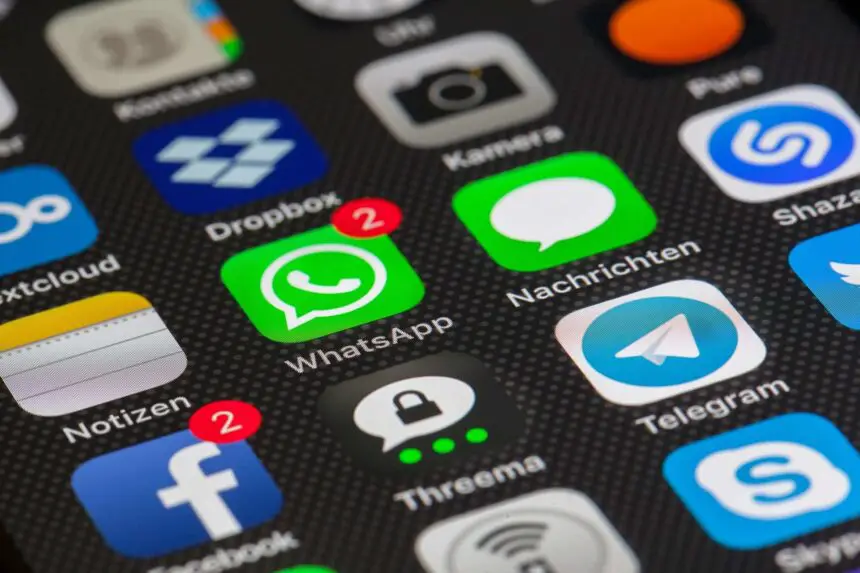A Brief Overview of Social Media History
Let’s take a concise journey through the history of social media. We’ve touched on this topic before, but this time, we’ll provide a condensed version. To understand social media’s evolution, we must first delve into the birth of the internet in 1947, driven by technological advancements during the Cold War era. Fast forward to 1969, ARPANET facilitated information exchange between institutions, paving the way for global connectivity. In 1997, SixDegrees emerged as the first social network, followed by Friendster, MySpace, and LinkedIn in the early 2000s.
The pivotal moment arrived in 2004 when Mark Zuckerberg introduced Facebook, revolutionizing online social interaction. YouTube followed suit in 2005, transforming the audiovisual landscape. Twitter, with its 140-character messages, made its debut in 2006, and WhatsApp in 2009, revolutionizing messaging.
In 2010, Instagram stood out for its focus on photography, while Pinterest and Google+ also emerged around the same time. Twitch, catering to gamers, entered the scene in 2011. TikTok, launched in 2016, became a global phenomenon with its short and creative videos.
In 2020, BeReal promoted authenticity, reaching 10 million daily users. Threads, launched by Meta in 2023, challenged X (formerly Twitter), promising a more positive space for users.
The Most Popular Social Media Platforms
Facebook, X (Twitter), Instagram, TikTok, YouTube, WhatsApp… You probably have more than one of these installed on your smartphone. While countless social networks exist in the vast internet world, a select few have managed to captivate a vast majority of users, becoming the most-used social media platforms worldwide.
According to the Digital 2024 report by We Are Social, Facebook reigns supreme with an impressive 3 billion users worldwide. Its longevity, diverse features, and global acceptance contribute to its leadership position.
YouTube ranks as the second most-used social network with 2.491 billion users. Its popularity stems from the variety of video content it offers, catering to diverse audiences seeking entertainment and tutorials.
WhatsApp, with 2 billion users, solidifies its position as one of the preferred messaging platforms, offering instant communication for daily interactions.
Instagram, also boasting 2 billion users, remains a favorite visual space for sharing images and videos.
TikTok, with 1.567 billion users, has captured the younger generation’s attention with its short and creative content, making it the perfect platform for entertainment and inspiration.
Influencers: The New Stars of the Digital World
Influencers have emerged as prominent figures on digital platforms and social media, attracting a substantial audience. They share authentic and diverse content, influencing their followers’ opinions and decisions across various niches like fashion, lifestyle, sports, humor, and more.
In recent years, influencers have gained significant importance globally, shaping trends, defining lifestyles, and advocating for social causes.
Their ability to influence their followers’ purchasing decisions, combined with their massive reach on social media platforms, allows them to promote products and services more directly and personally than traditional advertising. However, their promotions must adhere to certain guidelines, avoiding unethical practices like covert advertising.
There are various types of influencers, depending on the content they create and their size (micro-influencers or macro-influencers). Additionally, each social network offers a unique space with its own conditions that enhance certain themes over others. Nevertheless, some personalities, either through their social media content or their work outside of these platforms, have managed to rise to the top, becoming the most-followed influencers in the world.
Social Media Born Terms
Social media has given birth to several terms that define experiences, interactions, and phenomena. From expressions describing unexpected situations to concepts outlining the complexity of online interactions. Some of these terms include:
- Follower: Someone who follows another person on social media.
- Hashtag: A label used to categorize content based on its theme, aiding the social network in positioning it and helping your followers find it.
- Hater: A person who makes negative and disparaging comments on social media towards other users.
- Influencer: A person with a loyal following, large or small, who, thanks to their content and communication skills, manages to arouse interest and become a reference point.
- Like: A reaction to content through which a user indicates that they like it.
- Random: Used to describe something unusual, funny, or different.
- Stalker: A person who meticulously checks other users’ profiles on social media, gathering detailed information about them.
- Streamers: Individuals who livestream, typically through platforms like Twitch.






